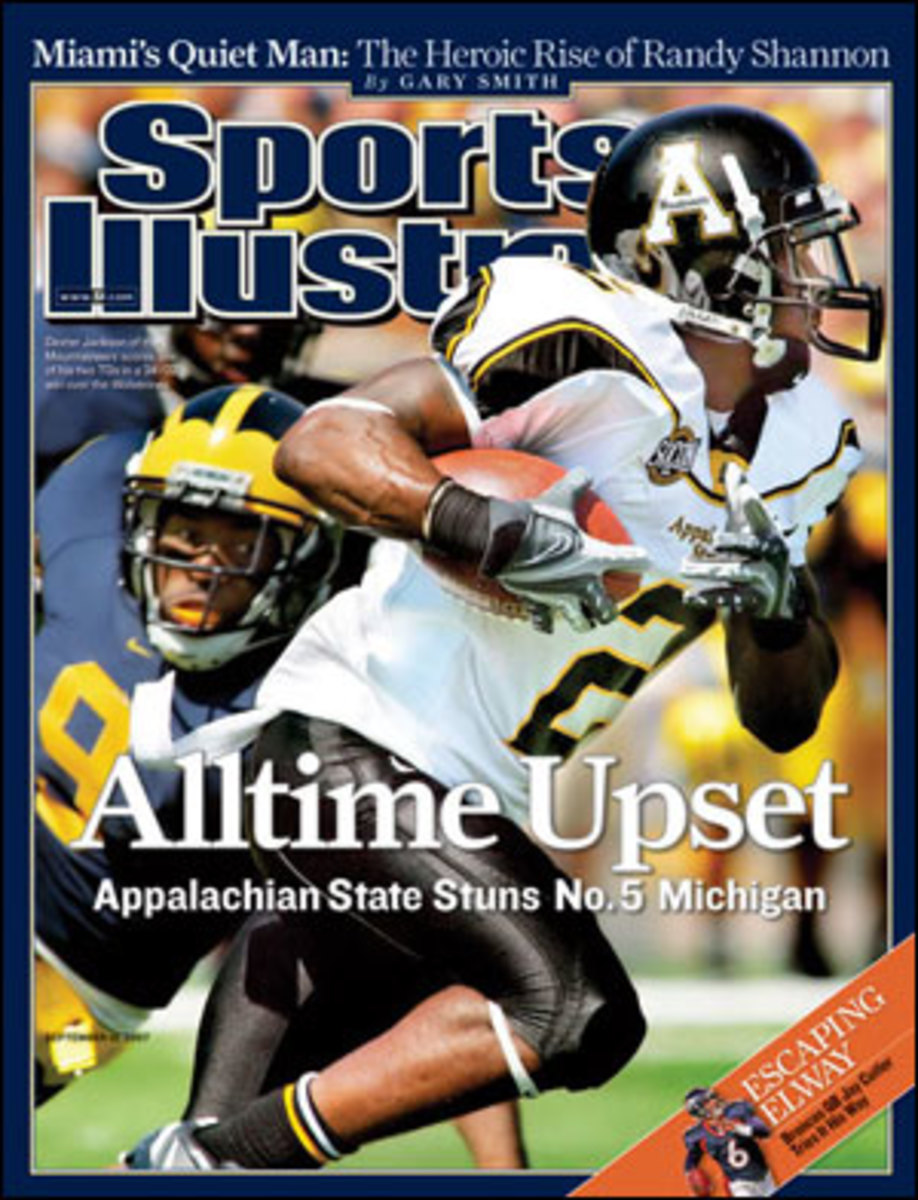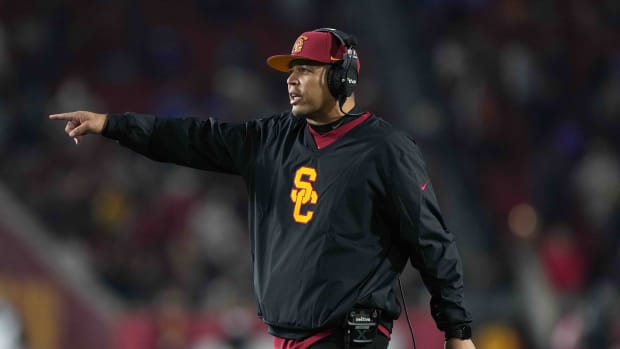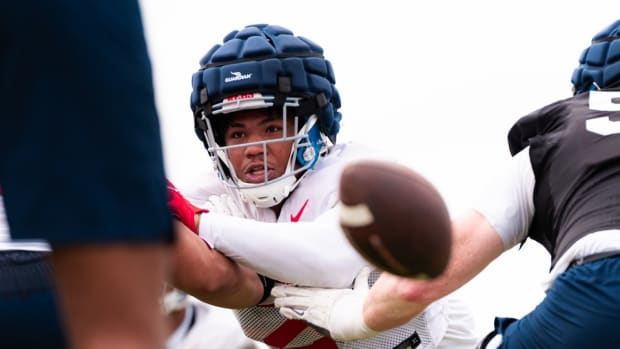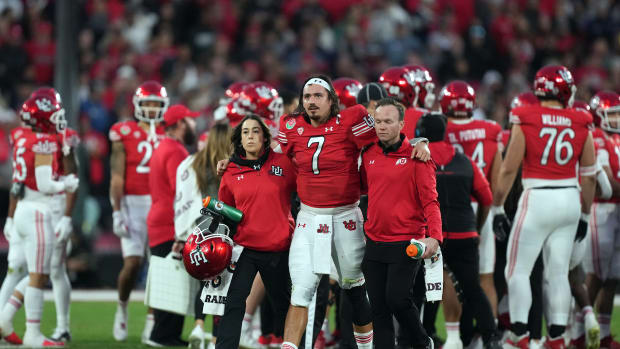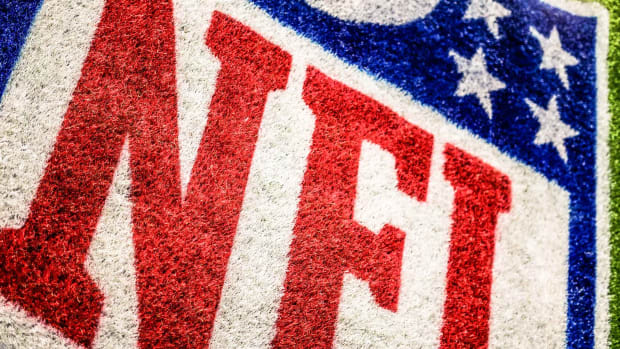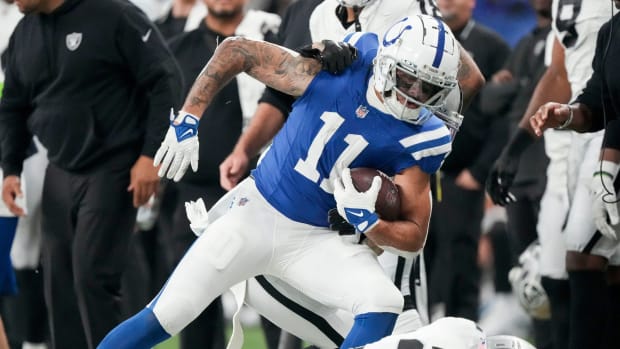The Year in Sports 2007
The Broncos just kept topping themselves. They tied the game on a fourth-and-18 hook-and-lateral play called Circus with seven seconds left in regulation. Then, after his team had scored a touchdown in overtime on a fourth-down halfback pass, coach Chris Petersen bypassed the tying extra point and bamboozled the Sooners with Statue, a sleight-of-hand gambit on which tailback Ian Johnson sprinted untouched into the end zone for the winning two-point conversion. When it was over, Johnson had still one last surprise, dropping to a knee and proposing to his girlfriend, cheerleader Chrissy Popadics, during a nationally televised postgame interview. "She had no idea it was coming," Johnson said.
The rest of America had a similar feeling for the remainder of the delightfully unpredictable year, never knowing where the next surprise was, right up to the first day in December, when the top two teams in the BCS rankings, Missouri and West Virginia, lost. The season turned into an extended version of basketball's March Madness. The question wasn't whether another upset was on the horizon, only "Who?" and "How?"
Who, for instance, was Appalachian State? Before Sept. 1 the Mountaineers were a little-known program in Boone, N.C., and the division formerly known as I-AA. Now they will be remembered as the NCAA Football Championship Subdivision team that went to Ann Arbor and, using the increasingly popular spread offense to pick apart the Michigan defense with surprising ease, humbled the fifth-ranked Wolverines 34-32, on the season's first Saturday. And how could visiting Stanford, a 40-point underdog with a quarterback, Tavita Pritchard, making his first college start, march 45 yards on its final drive for the touchdown that beat top-ranked USC 24-23 on Oct. 6? How, too, could Louisiana-Monroe's 21-14 upset of Alabama pass with such relatively little notice? Maybe it's because by that time -- Nov. 17 -- there were no jaws left undropped.
This is how wild a year it was: Teams ranked in the top five lost to unranked opponents 13 times. The No. 1 team was beaten four times, the most in one season since 1990. For the first time since '96, the No. 1 (LSU) and No. 2 (Cal) teams lost on the same regular-season weekend -- then it happened twice more. No favorite was safe, no underdog was without hope, and no fan could have asked for more entertaining, season-altering twists. It was almost enough to make everyone forget that because of the absence of a playoff, there would be no satisfying resolution to the madness.
The spread offense, with its four- and five-receiver sets, was the great equalizer. Teams that didn't have the size and depth to slug it out with perennial powers needed only a few speedy wideouts and an accurate quarterback to move the ball. So the upsets proliferated, with each underdog emboldened by the success of the ones before it.
It was a joyride of a year, one that left us feeling even more like Popadics, the cheerleader who is now Johnson's wife, did on that first night of 2007 -- a little stunned, but undeniably thrilled. -- Phil Taylor
The sight must have caused any Notre Dame fan to turn away: Brady Quinn, one year removed from being the golden boy quarterback of the Fighting Irish, was wearing the cardinal-and-gold jersey of hated USC. Or maybe Irish-lovers merely shrugged off another indignity in a year that was full of them. When you're already on your way down to the canvas, what's one more shot to the gut?
Considering its history and always high expectations, Notre Dame had arguably the worst season of any team in college football. The Irish played badly; they finished 3-9. They were badly coached -- the previously sainted Charlie Weis made baffling strategic moves and was indecisive about his quarterbacks. They were bad for business: NBC ratings for their games plummeted, and the Irish didn't get their typical lucrative bowl payout. At least the vision of Quinn, now with the Cleveland Browns, decked out as a Trojan was only a fleeting horror. He lost a bet with former USC quarterback Rodney Peete over the Notre Dame-USC game, won 38-0 by the Trojans, and had to wear the jersey during locker room interviews.
The rest of the nightmare lasted all season. Given their youth, the Irish weren't expected to be title contenders, but no one foresaw their losing to Navy (for the first time in 44 years) and Air Force, getting blown out three times by 30 points or more or not scoring an offensive touchdown until the fourth game. "We're way too inconsistent," Weis said after losing to Air Force on Nov. 10. "Therefore you have to go back and evaluate the teacher... and the people learning."
The evaluations of Weis were suddenly much harsher than in his first two seasons, when Notre Dame was a combined 19-6. And rightly so. The Irish showed little improvement as the season progressed. Pass protection, for instance, was as much a problem in the last game as the first. Notre Dame surrendered 58 sacks, the highest total of any team in the three years that the NCAA has officially tracked the statistic.
Weis wasn't blind to his failings. He plans to consult with his former colleagues from the New England Patriots, where he was offensive coordinator for five years, for suggestions on how to improve his performance. There's also what is expected to be a strong recruiting class to lift the talent level. Irish fans, meanwhile, can only wish they could erase the memory of 2007 as quickly and easily as Quinn shed that USC apparel. -- Phil Taylor
Mad cow disease might be a headline from another year, but 2007 brought a new strain, call it Mad Coach disease, which afflicted several of the head men in the Big 12. They didn't quite foam at the mouth, but a couple of them, like Oklahoma State's Mike Gundy and Dan Hawkins of Colorado, weren't far from it in a year of bizarre outbursts and otherwise odd behavior from the conference's coaches.
Gundy and Hawkins both became YouTube celebrities thanks to comic press conference rants. A September column in The Daily Oklahoman that questioned the toughness of one of his players set Gundy off on a three-minute diatribe. "Come after me!" he bellowed at the author of the column, Jenni Carlson. "I'm a man! I'm 40!" -- although the tantrum made him sound more like he was four. Hawkins seemed much calmer when he told reporters last February about a complaint he had received from a player's parent regarding the reduced time off he was allowing during the off-season, but then he snapped. "It's Division I football! It's the Big 12!" he yelled, apparently forgetting that he was talking to reporters, not players. He closed by offering advice to anyone who couldn't handle the workload, "Go play intramurals, brother."
The conference teemed with ticked-off coaches. Texas Tech's Mike Leach was fined a Big 12-record $10,000 for suggesting that the officials may have been biased in favor of Texas after the Red Raiders' 59-43 road loss to the Longhorns in November. "I think it's disturbing that Austin residents are involved in this," he said without mentioning referee Randy Christal by name. "People work too hard, too long, there's too much money invested in these games to allow that. Am I condemning the crew? Hell, yeah, I'm condemning the crew."
Leach's comments proved expensive, but at least he was still employed at season's end, which makes him more fortunate than two of his Big 12 colleagues, Bill Callahan of Nebraska and Dennis Franchione of Texas A&M. According to a recently published book about the Cornhuskers' program, Callahan dissed the local media -- "I'm going to get me a real newspaper," he was quoted as saying. "I'm going to read The New York Times" -- which wasn't nearly as dangerous a career move as insulting a Nebraska legend. After a phone conversation with Tom Osborne, Callahan, according to a former Nebraska trainer, referred to Osborne as a "crusty old f---." And even as Nebraska was stumbling to a 5-7 finish, Callahan said, "I have done an excellent job in every area." Osborne, who in October was named interim athletic director, fired Callahan the day after the Cornhuskers' final game, a 65-51 loss to Hawkins's Colorado team.
Franchione's fate was sealed when it became public that he was profiting from an electronic newsletter with inside information about the Aggies -- including injuries, game plans and recruiting news -- that was being sent to about a dozen boosters. Why he felt the need to supplement his $2 million salary with the chump change, comparatively speaking, from a $1,200-per-subscriber newsletter is anyone's guess. -- Phil Taylor
